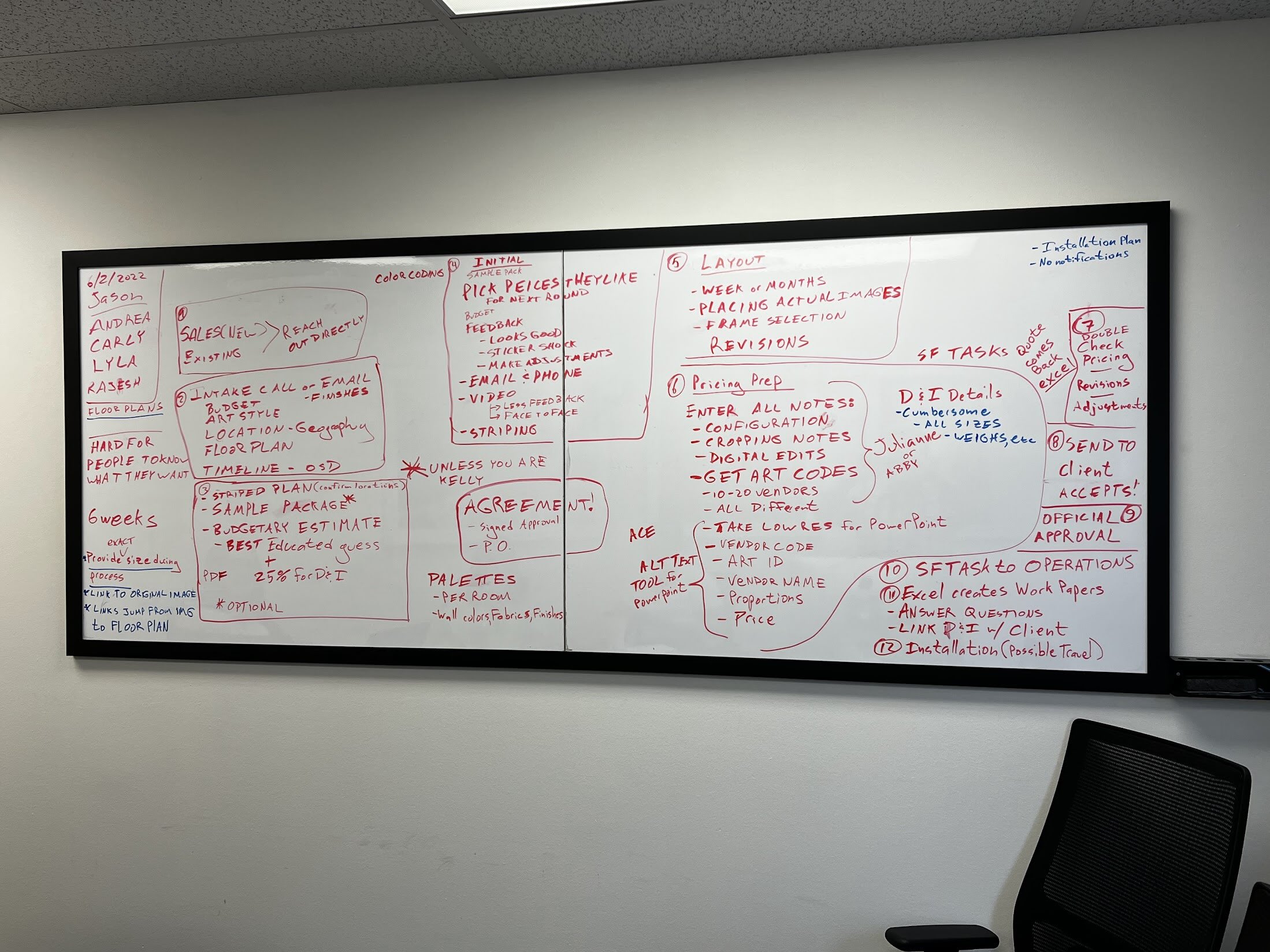ARCH Design – Streamlining Interior Design Workflows
Turning a chaotic, manual process into a smarter, designer-friendly tool.
The Problem / Context
ARCH Design specializes in interior artwork for healthcare spaces. If you’ve ever seen framed art in a hospital hallway or waiting room, there’s a good chance ARCH was behind it.
Behind the scenes, however, their workflow was anything but elegant. Designers managed complex client projects using Excel and PDF exports. Clients would print the PDFs, mark them up by hand, scan them, and email them back—often multiple times per project. Multiply that by hundreds of active projects, and you get the picture.
ARCH came to our team with a clear ask: “Can you help us streamline this whole mess?”
My Role & Constraints
I served as the UX strategist, leading discovery and early product definition. I was responsible for research, workflow mapping, and the design of the initial prototypes.
I worked solo during the discovery and design phase, and later transitioned visual design work to another teammate while I led a week-long design sprint with a group of interns.
One of the biggest constraints was budget. While the goal was to eventually integrate with ARCH’s fabrication system, the first phase would only focus on improving internal workflows. This meant designing for the future while also staying crystal clear about what was (and wasn’t) included in the current delivery.
The Process
I began by assembling a small, cross-functional discovery team representing project management, design, and development. We started with an on-site tour of ARCH’s design studio and fabrication center to see how work moved from concept to production.
From there, we interviewed stakeholders across the company—including the CEO, design manager, CTO, fabrication leads, and billing—each sharing a unique view of pain points in the process.
Then I facilitated two whiteboard sessions with a group of interior designers to map their existing workflow in detail. These sessions exposed just how inefficient and fragmented the “messy middle” of their process had become.

What emerged was clear: while ARCH was focused on improving one part of the system, the true scope of the work was far larger than initially expected.
Initial Prototype Goals
The prototype focused on enabling designers to:
- Upload floor plans provided by clients
- Define zones for artwork placement
- Select images and attach metadata (dimensions, materials, finishes)
- Collaborate with clients through an integrated revision process
I designed the flows and interface using Figma, based on the workshop outputs and real-world constraints.
Outcomes
After the discovery and co-creation phase, development kicked off. Although I transitioned off the project, I ensured continuity by handing off design artifacts and documentation.
The designers I worked with said they felt heard and confident that the final product would reflect their actual needs. The sense of collaboration and being part of the solution meant a lot to them—and to me.
Unfortunately, the project later ran into challenges. As scope expanded, budget remained fixed. The team responsible for delivery found themselves overextended, and contractual limitations made it difficult to adjust expectations midstream.
Though I was no longer on the project at that point, it was disappointing to see such a strong start get tangled later in the process. It was a reminder that even great design work can’t shield a project from structural misalignments.
Reflection
I’m proud of what we accomplished in the early phases:
- Stakeholders from across the org were aligned for the first time
- Designers were finally part of the solution, not just reacting to it
- We built a system that worked the way they did — not the other way around
If I could do it again, I’d push harder to highlight early scope risks. I’d advocate for stronger change management language in contracts, and more experience in building new applications from the ground up.
Still, this was a rewarding project—both for the value we created and for what I learned about designing through complexity, leading with empathy, and helping clients rethink what's possible.
Looking for someone who can bring clarity to chaos?
Let's talk about how strong discovery and design can change the trajectory of a product.
Get in touch